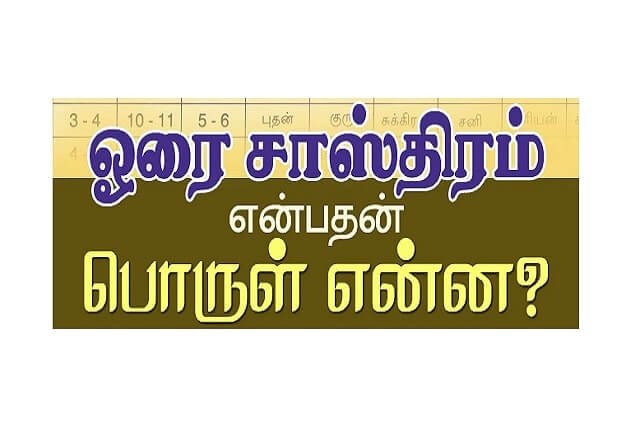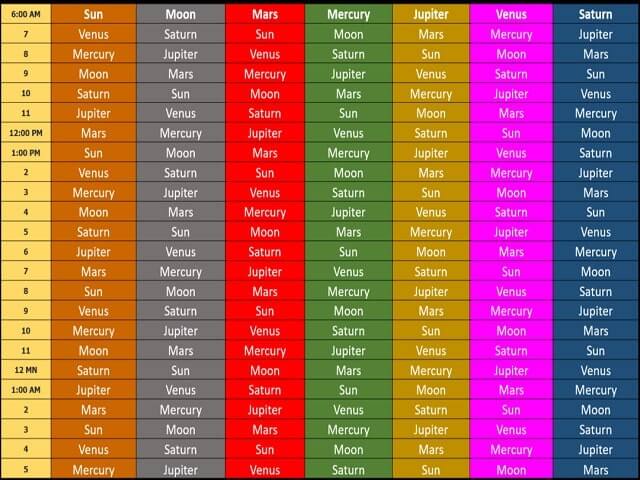- April 1, 2025

Contents
Like a day, each hour has its own specialities.
Originally each 24 hour day was split into 60 naazhigais, each 24 minutes long. Thus two and a half nazhigais constitute one modern hour which was known as horai (hora) in ancient times.
The Siddhas say that each horai of each day is ruled by one of the first seven of the nine lords. Just like each day reflects the characteristics of the lord who rules the day, each horai also reflects the characteristics of the lord who rules the horai. Thus we have Soorya horai, Chandra horai, Angaaraka horai, Budha horai, Guru horai, Sukra horai and Sani horai times during each day.
The planetary rulership of the hours is as follows:
At what time or times of the week are the characteristics of each of the seven lords most prevalent?
The characteristics of each of the seven lords are most prevalent during his horai times on the day ruled by him. For example, Budha’s characteristics are most prevalent during the Budha horai times on Wednesday, and hence these are the best time periods for conducting activities governed by Budhan.
When do the various Horai periods occur during the day? Horai periods start with Surya horai at sunrise on Sunday and continue in the following cyclic order: Soorya, Sukra, Budha, Chandra, Sani, Guru, Angaaraka. For example, assuming a 6 a.m. sunrise, 9 a.m. to 10 a.m. on a Sunday would be Chandra horai and 6 p.m. to 7 p.m. would be Guru horai.
If you do the tabulation, you’ll find that each day starts with the Horai of its governing lord at sunrise. That is, Monday starts with Chandra Horai at sunrise, Thursday starts with Guru Horai and so on.
How can we make sure that we get the maximum spiritual benefit during every hour of the day?
All a spiritual aspirant has to do is to meditate on the governing horai lord 108 times during each horai. For example, during Soorya horai times meditate thus: Om Sooryaaya Namaha or Salutations to Soorya. Likewise Om Chandraaya Namaha, Om Angaarakaaya Namaha, Om Budhaaya Namaha, Om Guruve Namaha, Om Sukraaya Namaha, Om Saneesvaraaya Namaha during their respective Horai periods.

Timing of activities: Hora can be used to determine the most auspicious times for starting new projects, performing important tasks, or making significant decisions. By choosing the right hora, you can align your actions with the natural rhythms of the universe and maximize your chances of success.
Personalized guidance: Each person’s birth chart contains specific information about their hora, which can provide insights into their strengths, weaknesses, and life path. By working with an experienced astrologer, you can gain a deeper understanding of yourself and receive guidance on how to navigate life’s challenges.
Spiritual growth: In addition to its practical applications, hora is also a tool for spiritual growth and self-realization. By studying the movements of the planets and their influence on human consciousness, you can deepen your connection to the divine and gain a greater sense of purpose and meaning in life.
It’s important to note that hora is a complex and nuanced subject, and it’s best to work with a qualified astrologer or spiritual teacher to fully understand its implications and applications.